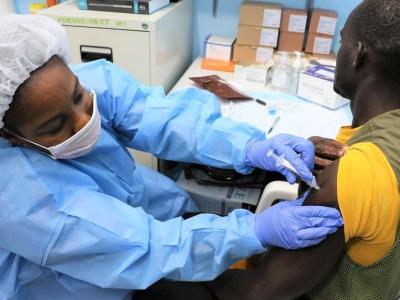Dec 14, 2007 (CIDRAP News) – Reports of suspected human H5N1avian influenza cases among brothers in Pakistan are raising fresh fears in the global health community of human-to-human transmission of the virus, amid uncertainty about how a father-son pair in China contracted their H5N1 infections.
Media outlets in Pakistan have been reporting on a possible family cluster in the northwestern part of the country over the past few days, but the sources of the information were often murky, and the details of the cases were confusing and often contradictory. And even though today's news reports flesh out more details about the suspected cases, they still contain contradictory statements.
If the World Health Organization (WHO) confirms the Pakistani cases, they would represent the country's first reported appearance of the H5N1 virus in humans in Pakistan.
Confusion, concern in Pakistan
Today an anonymous source in Pakistan's health ministry told Kuwait News Agency (KUNA) that authorities are testing samples from two poultry farm workers who died in a hospital isolation ward from suspected H5N1 infections. The ministry official said the brothers are from Mansehra district and were admitted to a hospital in Peshawar, in northern Pakistan, KUNA reported.
"We have received their blood samples, and they have been sent to laboratory for clinical analysis," the ministry official told KUNA, adding that results are expected tomorrow.
The Mansehra district where the men are from has experiencedH5N1 in poultry, and thousands of birds have been culled in the area, the KUNA report said.
Khushnood Akhtar, secretary of Pakistan's health ministry, said the cases occurred in November but said that four brothers are involved, Deutsche Presse-Argentur (DPA) reported today. One of the men, who worked on a poultry farm, may have contracted the H5N1 virus after he helped cull sick birds, Akhtar told DPA.
The man survived but may have infected three of his brothers, none of whom had been at the farm or in contact with sick birds, Akhtar said in the DPA report. The DPA report appears to contradict the KUNA story, which said the two men in its report were farm workers.
Akhtar told DPA that two of the brothers died of pneumonia-like symptoms but were buried before health officials could obtain blood samples, which appears to contradict what the anonymous health ministry official told KUNA.
A third brother who lives in the United States and was visiting Mansehra also tested positive for the H5N1 virus, but survived and returned to his US home, Akhtar told DPA.
"We have requested the WHO to send a team to the area so we can find out exactly what happened there," he said in the DPA report.
Developments in China
Meanwhile in China, the military in Nanjing, located in Jiangsu province in the eastern part of the country, banned poultry sales this week after the H5N1 virus killed a 24-year-old man from the area and sickened his 52-year-old father, the Associated Press reported today. Chinese officials have said they aren't sure how the two men became infected or if there is any connection between their illnesses.
China has not reported any recent H5N1 outbreaks in poultry.
The European Centre for Disease Prevention and Control(ECDC) said in an influenza news assessment yesterday that despite the familial link between the two men, it is too soon to say if their cases represent an instance of human-to-human H5N1 transmission.
"Even if limited human-to-human transmission is proven in this or other cases, that is not new," the ECDC report said. "ECDC would not change its EU [European Union] risk assessment in the absence of enlarging clusters and chains of transmission of H5N1, which are not being seen at present."
Cases serve as stark reminder
Michael T. Osterholm, PhD, MPH, director of the University of Minnesota Center for Infectious Disease Research and Policy, publisher of CIDRAP News, said there is obviously a major uptick inH5N1 activity in birds and humans, and that increased reports of the virus aren't surprising, given the cooler seasonal conditions that have been associated with increased influenza activity.
Today the WHO confirmed Myanmar's first human H5N1 case, and Indonesia's health minister announced another death from the disease. (See today's CIDRAP News article for more details.)
Osterholm said he doesn't see a reason to panic over reports of family clusters and suspected human-to-human transmission. "Part of the problem with trying to understand the potential of H5N1 to cause the next pandemic is that we still don’t know what it will take to make it happen, "he told CIDRAP News.
The H5N1 virus continues to have opportunities to find the right combination for sustained human-to-human transmission, Osterholm said, "but maybe this is all it will ever do."
"Surely, this should remind us that this virus is continuing an uncontrolled and incredibly exuberant genetic mutation pathway," he said.
The emergence of human H5N1 cases in Pakistan wouldn't be surprising, Osterholm said, "I've never believed that these countries could isolate themselves."


















